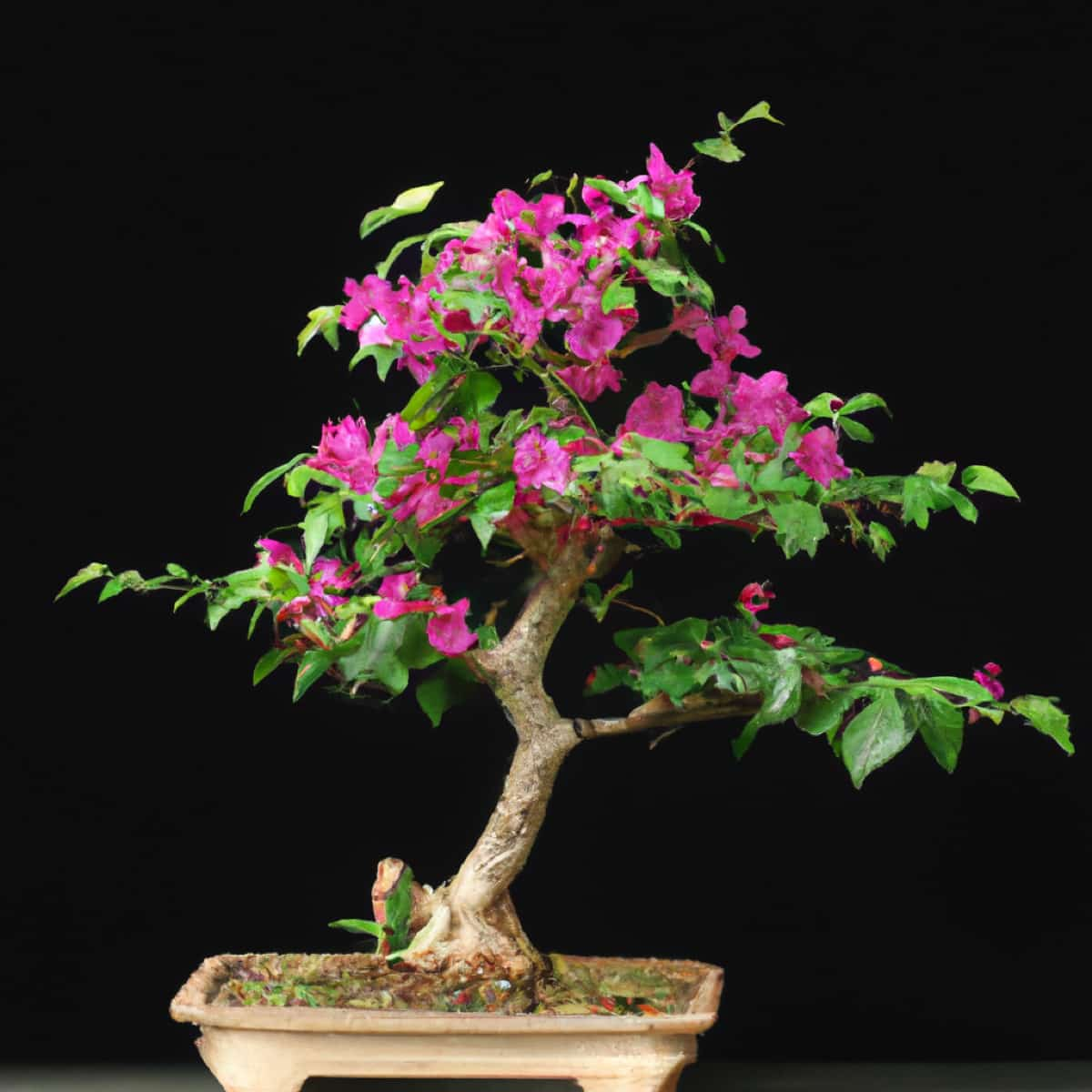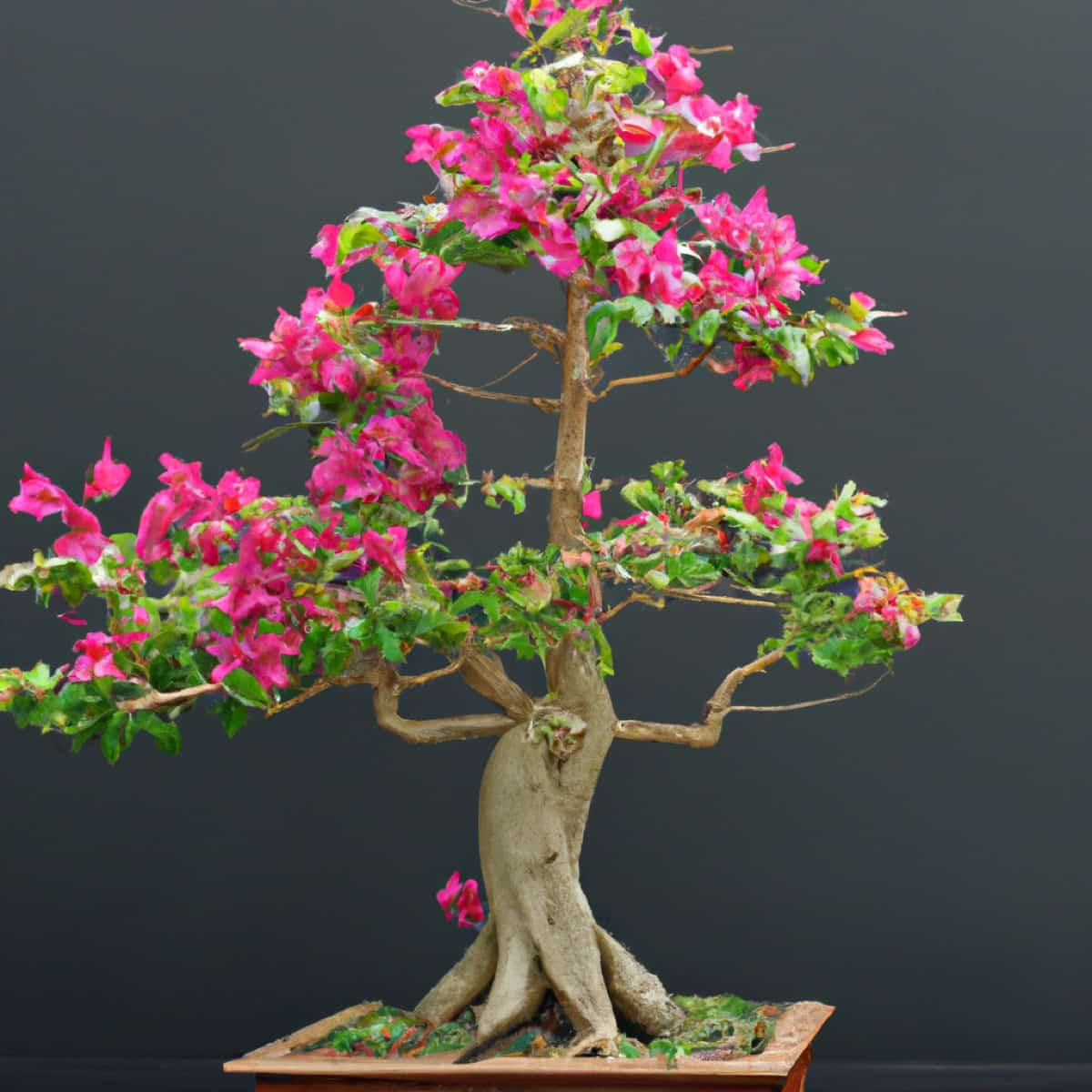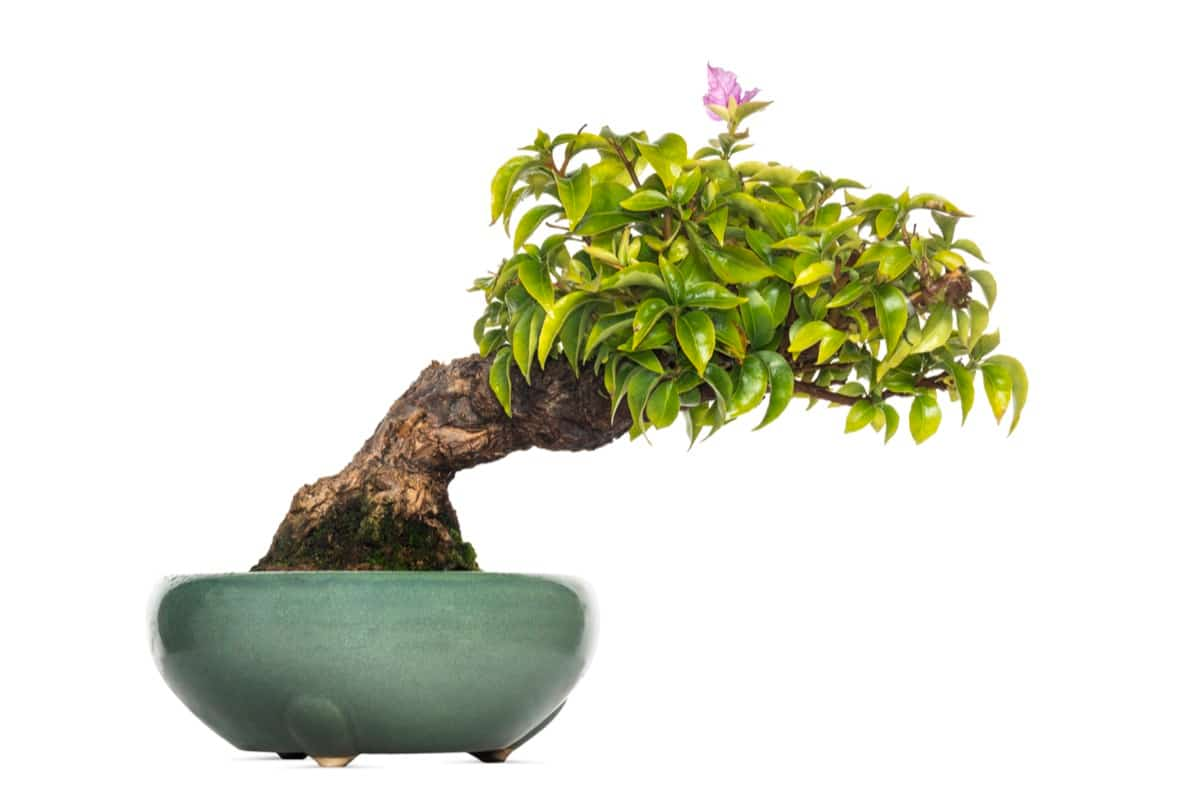Creating and caring for a Bougainvillea bonsai offers an engaging gardening project, and the stunning results are well worth the time and effort. Bougainvillea, a tropical vine known for its dazzling flowers, is an attractive indoor bonsai.

The process involves careful propagation, typically using cuttings, developing a specialized soil mix to ensure the plant’s health, and using appropriate fertilizers to boost growth. Here we learn about how to grow a Bougainvillea bonsai indoors, starting from planting it as a seed or cutting it, nurturing it with the right soil mix, fertilizers, and other essential care tips.
How to Grow and Care for Bougainvillea Bonsai
How to Plant Bougainvillea Bonsai From Seeds
Planting a Bougainvillea bonsai from seeds is a challenging yet rewarding experience. Start by sourcing quality Bougainvillea seeds from a reputable supplier. After obtaining the seeds, prepare a seed tray filled with a well-draining soil mix. Put the seeds on the soil surface and gently sprinkle a thin layer of the same mixture over them.
Water the tray lightly, ensuring the soil remains damp but not waterlogged. Maintain a warm temperature to foster germination. In the coming weeks, place the tray in a warm spot, avoiding direct sunlight. Water regularly to keep the soil moist. Once the seedlings are large enough to handle, you can transfer them into individual pots.
Step-by-step Guide to Growing Bougainvillea Bonsai Indoors
The next phase is transitioning the seedling or a cutting into a Bougainvillea bonsai indoor plant. Begin by choosing an appropriate bonsai pot, ensuring it has excellent drainage to prevent waterlogging. Place a layer of your soil mix at the bottom of the pot and position your Bougainvillea seedling or cutting on top.
Gradually add more soil around the plant, ensuring it’s firmly in place but not compacted. Water the plant thoroughly after repotting. Place your new bonsai away from drafts in a warm, brightly lit location. Regular watering and feeding with a balanced bonsai fertilizer will promote a healthy growth pattern and vibrant blooms.
Essential Care Tips for Bougainvillea Bonsai Trees
Caring for a Bougainvillea bonsai tree requires dedication and a deep understanding of the plant’s needs. It involves creating an environment that replicates the plant’s natural habitat. In terms of temperature, Bougainvillea bonsai trees thrive best in warm conditions. During colder months, keep your bonsai indoors to ensure ample sunlight exposure. Regular watering is also essential, but avoid overwatering as this can lead to root rot. A Bougainvillea bonsai fertilizer, preferably high in potassium and phosphorus, will boost flower production and promote vibrant color.
Best Soil Mix for Bougainvillea Bonsai Cultivation
The soil mix you use plays a vital role in the success of your Bougainvillea bonsai. Bougainvilleas prefer a well-draining soil mix. A recommended Bougainvillea bonsai soil mix consists of one part peat, coarse sand, and perlite or pumice. This mix ensures excellent drainage while retaining enough moisture and nutrients for the plant’s needs. The soil pH should ideally be slightly acidic, between 5.5 and 6.0. Incorporating a slow-release fertilizer into the soil mix is also beneficial to nourish the plant over time.
Pruning Techniques for Shaping Bougainvillea Bonsai
Pruning is vital for Bougainvillea bonsai’s form and size upkeep. It also stimulates new growth and ensures the plant’s overall health. For a Bougainvillea, pruning can be done anytime during the growing season. The process involves removing unwanted branches and twigs using a sharp, clean pruning tool. Focus on maintaining the desired shape of your bonsai and removing any growth that interferes with this. Remember, Bougainvilleas bloom on new growth, so regular pruning will encourage more flowers.
In case you missed it: How to Grow and Care for Persimmon Bonsai: Planting, Pruning, and Repotting

Watering Schedule for Healthy Bougainvillea Bonsai Growth
Bougainvillea bonsai trees require regular watering to maintain healthy growth. The watering schedule should consider the size of the plant, the pot, the soil mix used, and the climatic conditions. Generally, it’s best to water your Bougainvillea bonsai when the top inch of the soil feels dry to the touch. Ensure you thoroughly saturate the soil and allow excess water to drain freely. Be cautious to avoid overwatering as this can lead to root rot, a common issue in bonsai cultivation.
Preventing and Treating Common Pests and Diseases in Bougainvillea Bonsai
Like all plants, Bougainvillea bonsai trees can fall prey to pests and diseases. Common pests include aphids, caterpillars, and scales, while common diseases include root rot, fungal leaf spot, and powdery mildew. Regular inspection of your bonsai will help identify any issues early on.
If pests are detected, use a soft cloth to wipe them off or treat them with insecticidal soap. Diseases can often be prevented by maintaining good hygiene, such as removing fallen leaves and ensuring adequate air circulation. In case of disease, remove the affected parts and treat them with a suitable fungicide.
Understanding the Light Requirements of Bougainvillea Bonsai Trees
Light plays a critical role in the growth and blooming of Bougainvillea bonsai trees. These plants prefer full sunlight, which encourages lush growth and vibrant blooms. Place indoor bonsai in a location that receives plenty of natural light, such as a south-facing window. If natural light is limited, consider using a grow light to supplement it. However, be careful not to expose the plant to harsh midday sunlight, which can scorch the leaves.
Winter Care Guidelines for Protecting Bougainvillea Bonsai From Cold Temperatures
As tropical plants, Bougainvillea bonsai trees need special care during winter. If temperatures drop below 50 degrees Fahrenheit, moving your bonsai indoors to a warm, well-lit location is best. Reducing watering during this period is also advisable as the plant’s growth slows down. Remember to keep the plant away from drafts and heating vents, which can dry out the plant.
Repotting Bougainvillea Bonsai: When and How to Do It Properly
Repotting is critical to bonsai care, ensuring the plant doesn’t become root-bound and has fresh soil to grow in. Typically, a Bougainvillea bonsai should be repotted every two to three years, depending on its growth rate. Repotting involves gently extracting the plant from its current pot, trimming excess roots, selecting a slightly bigger pot, adding soil mix, and transferring the bonsai into the new pot, filling it with additional soil. After repotting, water thoroughly and keep the plant in a shaded, protected location for a few weeks to allow it to recover.
In case you missed it: How to Grow and Care for Hibiscus Bonsai: Planting, Pruning, and Repotting

Conclusion
Growing and caring for a Bougainvillea bonsai requires patience, diligence, and a keen understanding of the plant’s needs. Every step is important, from planting the seeds or nurturing cuttings to creating the ideal soil mix, to pruning for shape and controlling pests.
And though it’s a tropical plant, with some care, it’s possible to enjoy the Bougainvillea bonsai indoors year-round. Remember to provide ample light, maintain a consistent watering schedule, and use a suitable bonsai fertilizer. With these steps, your Bougainvillea bonsai should thrive, providing an enduring display of vibrant color and grace.
- Feed Your Flock for Less: Top 10 Tips to Save on Chicken Feed
- Ultimate Guide to Ossabaw Island Hog: Breeding, Raising, Diet, and Care
- Hatching Answers: The Top 10 Reasons Your Chickens Aren’t Laying Eggs
- Eggs and Economics: Breaking Down the Cost of Raising Backyard Chickens
- Defend Your Greens: Proven Methods to Keep Iguanas Out of Your Garden
- Ultimate Guide to Cinnamon Queen Chicken: A Comprehensive Guide for Beginners
- Ultimate Guide to California Tan Chicken: Breeding, Raising, Diet, Egg-Production and Care
- Ultimate Guide to Marsh Daisy Chicken: Breeding, Raising, Diet, and Care
- 10 Types of Chicken Farming Businesses You Can Start for Profits